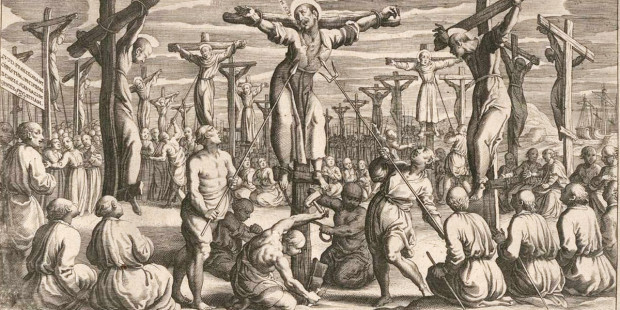Today the Church honors the 26 martyrs of Nagasaki. These native Japanese Catholics and foreign missionaries were killed for their faith in 1597.
St. Francis Xavier brought the Catholic faith to Japan in the 16th century, and Jesuit outreach continued after his death. But by 1587, more than 200,000 Japanese had been converted.
Because of the religious tensions in the country, many churches were destroyed, and missionaries were forced to keep their work secret. This didn’t deter more Japanese from converting, however, and within a decade, 100,000 more had turned to God.
In 1593, King Philip II of Spain sent Franciscan missionaries to Japan to continue charity and evangelization work, but their arrival disturbed the relationship between the Church and the Japanese government. When a Spanish ship was found off the Japanese coast carrying artillery, the imperial minister sentenced 26 Catholics to death.
The sentenced Catholics included three native Jesuits, six foreign Franciscans, and several laypeople, including children. They were marched 600 miles to the city of Nagasaki and sentenced to death by crucifixion and lancing.
During their march, the Japanese soldiers publicly tortured the Catholics, intending to terrorize other Christians. But the 26 were courageous throughout, singing hymns of praise even when they arrived at the hill where they would die.
These martyrs included Sts. Paul Miki, John of Goto, and James Kisai. These men were associated with the Jesuits, but were not priests. Miki was studying for the priesthood, Goto was a catechist preparing to join the order, and Kisai was a layman. Miki joined one of the other Franciscan captives in preaching to the crowds that had gathered to mock the prisoners on their way to Nagasaki.
St. Paul Miki and his companions were killed on Feb. 5, 1597. The place where they died became known as Martyr’s Hill. They were canonized in 1862 by Pope Pius IX.

